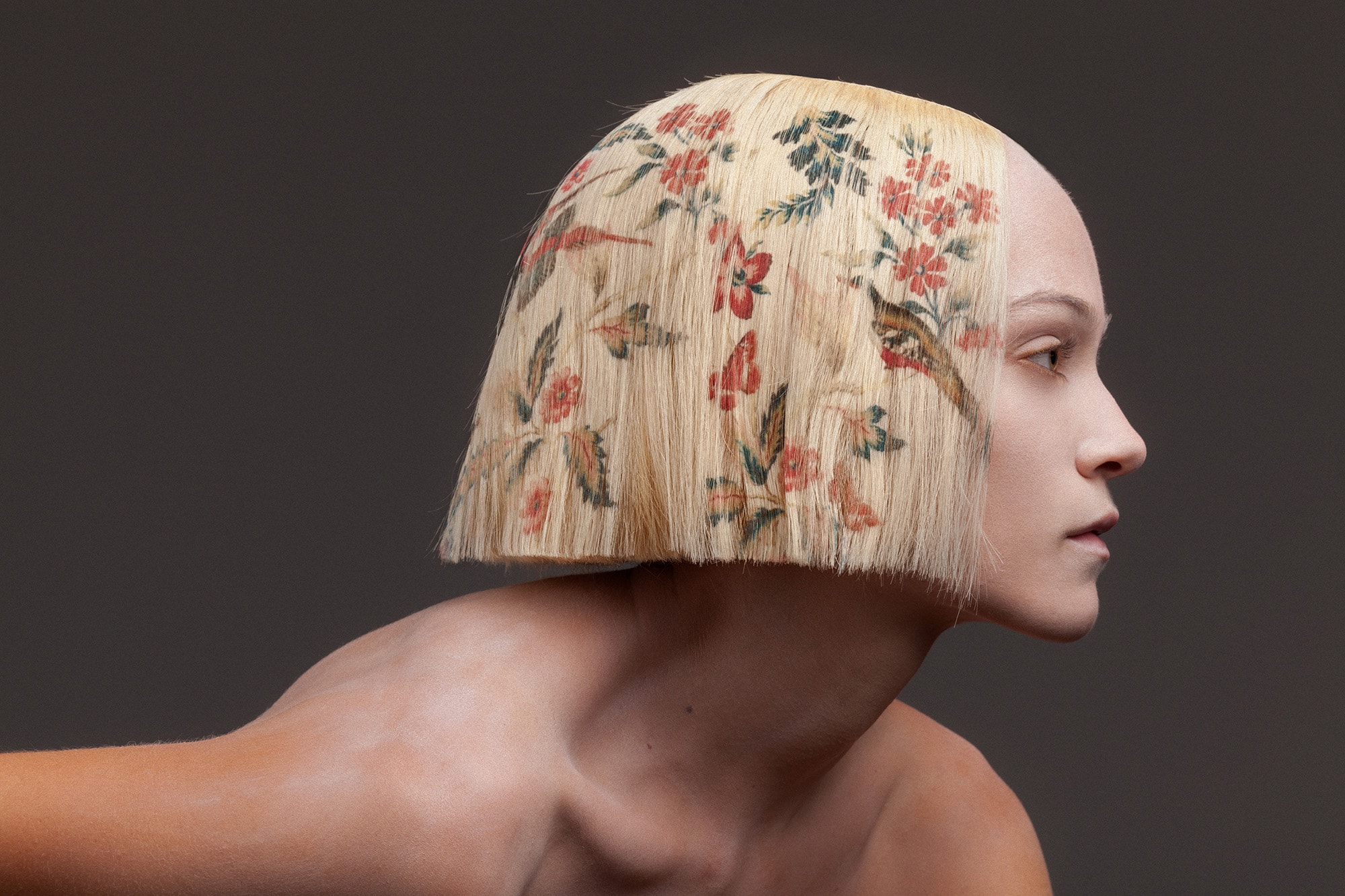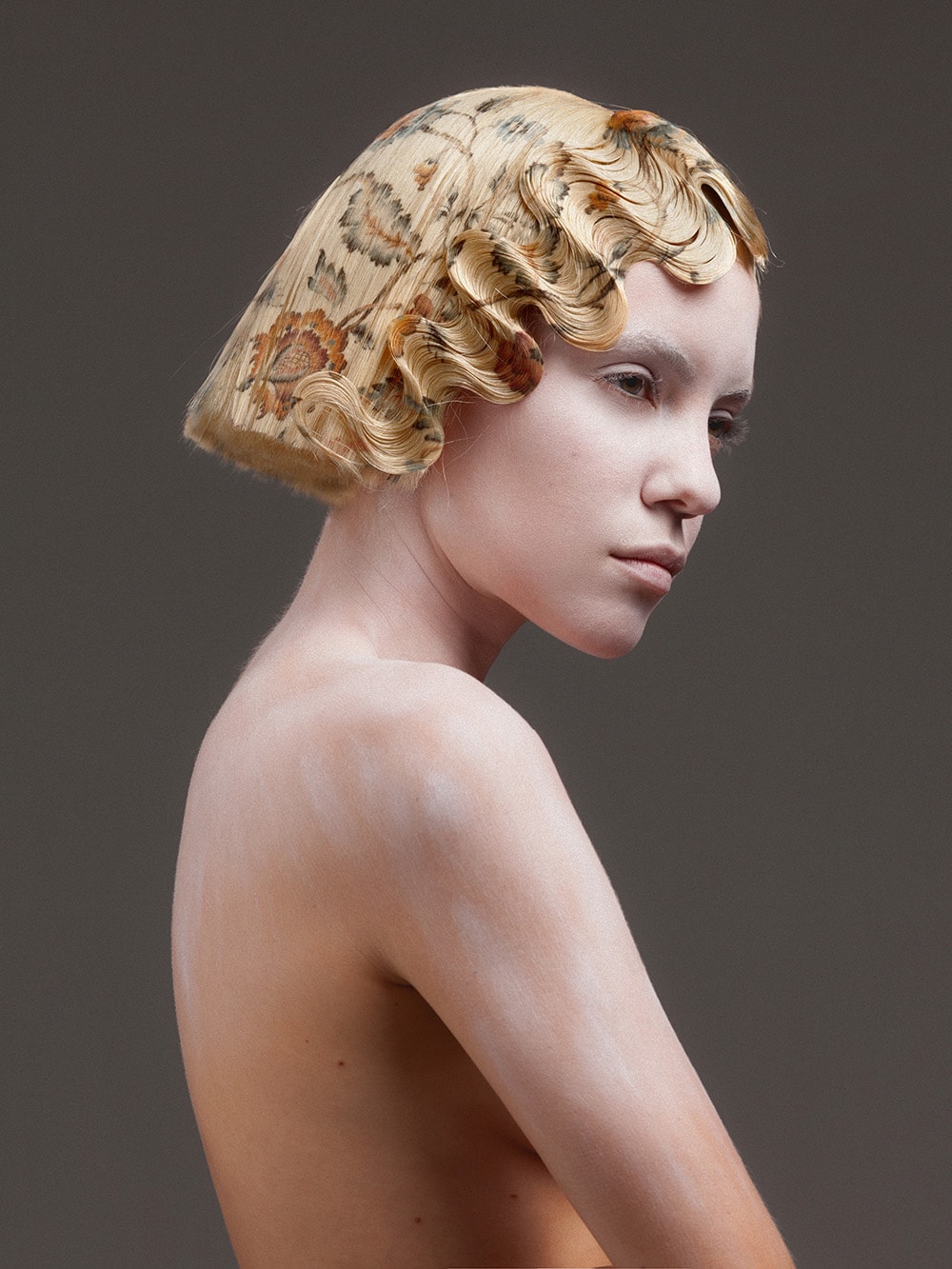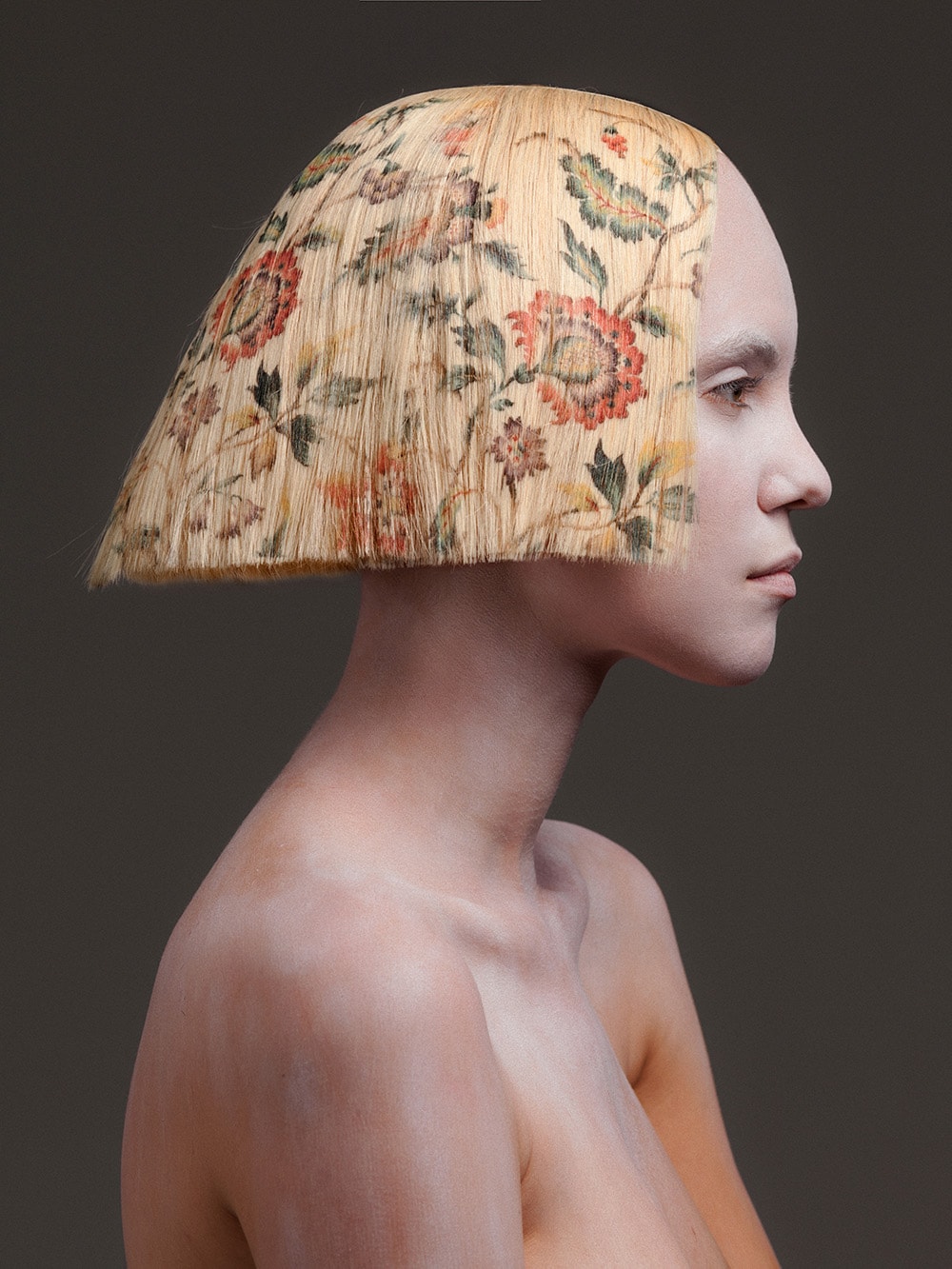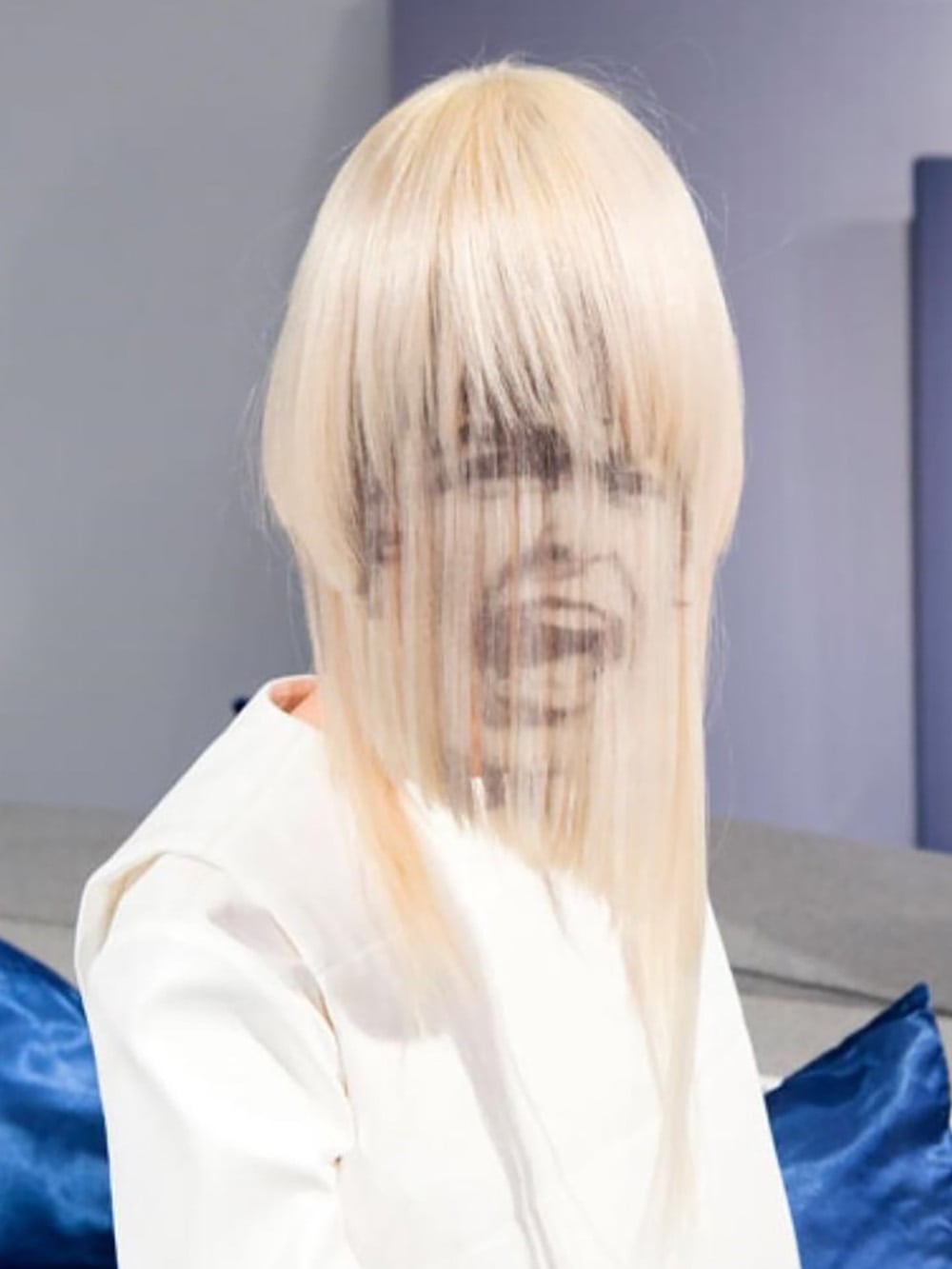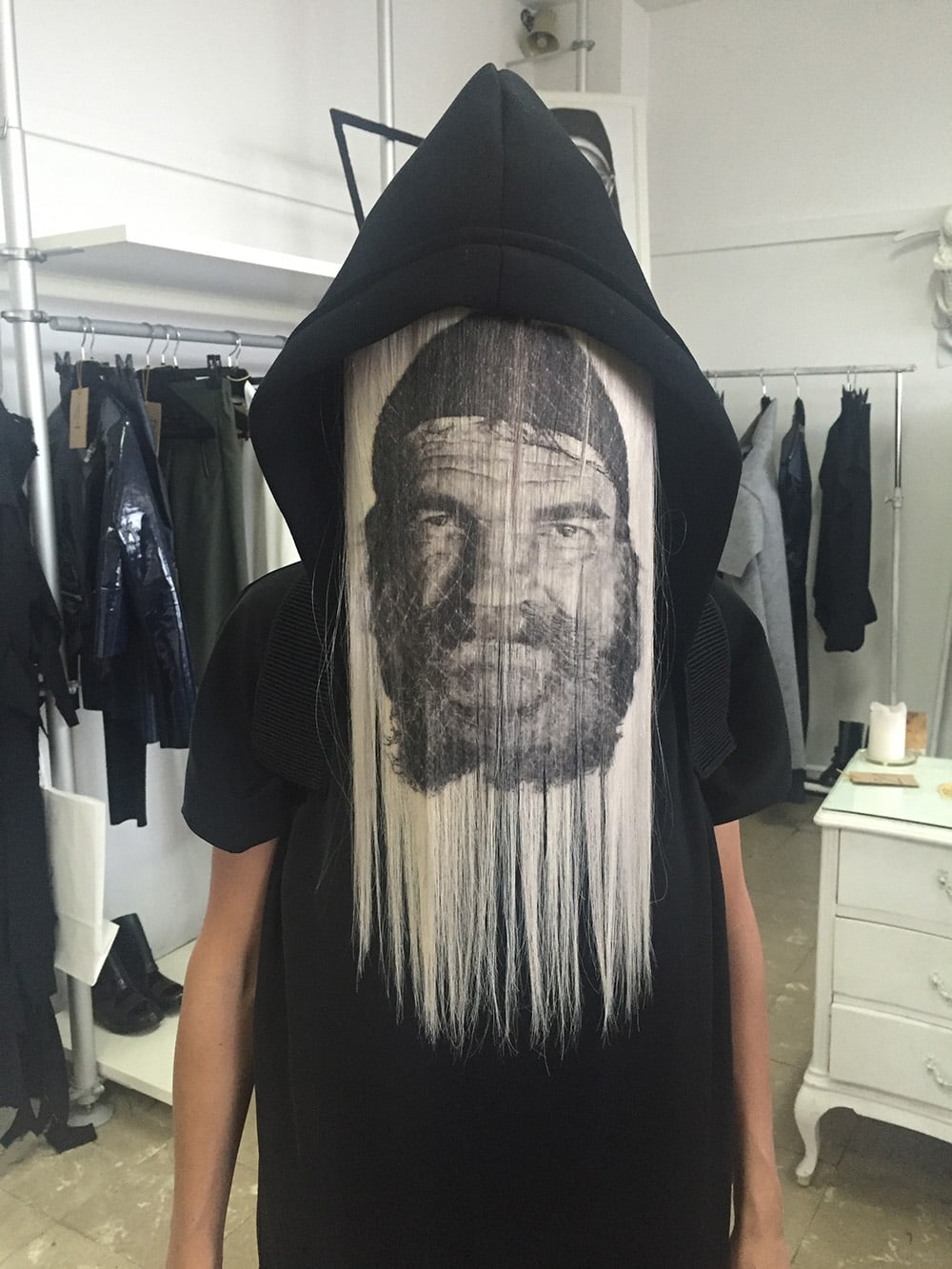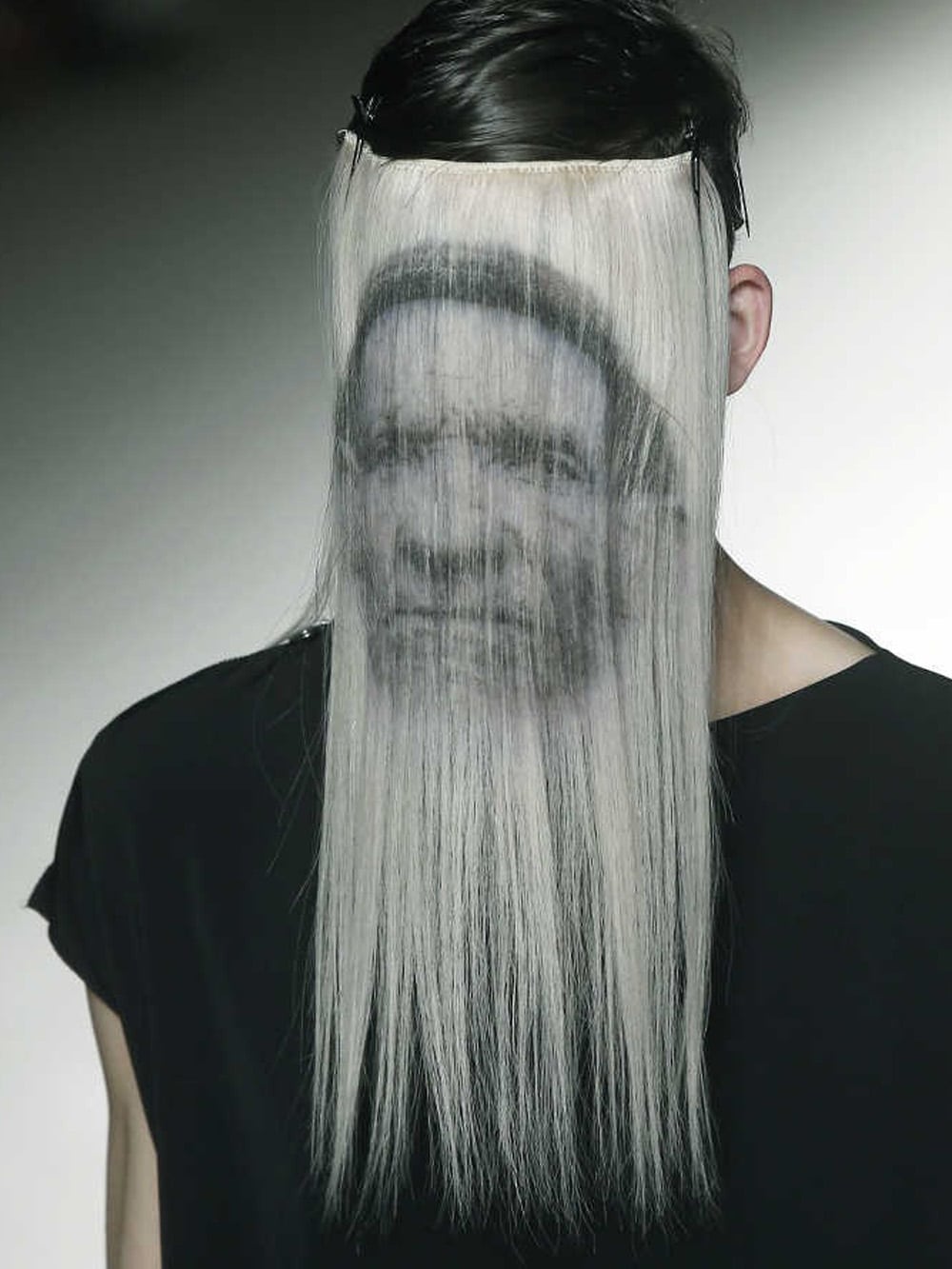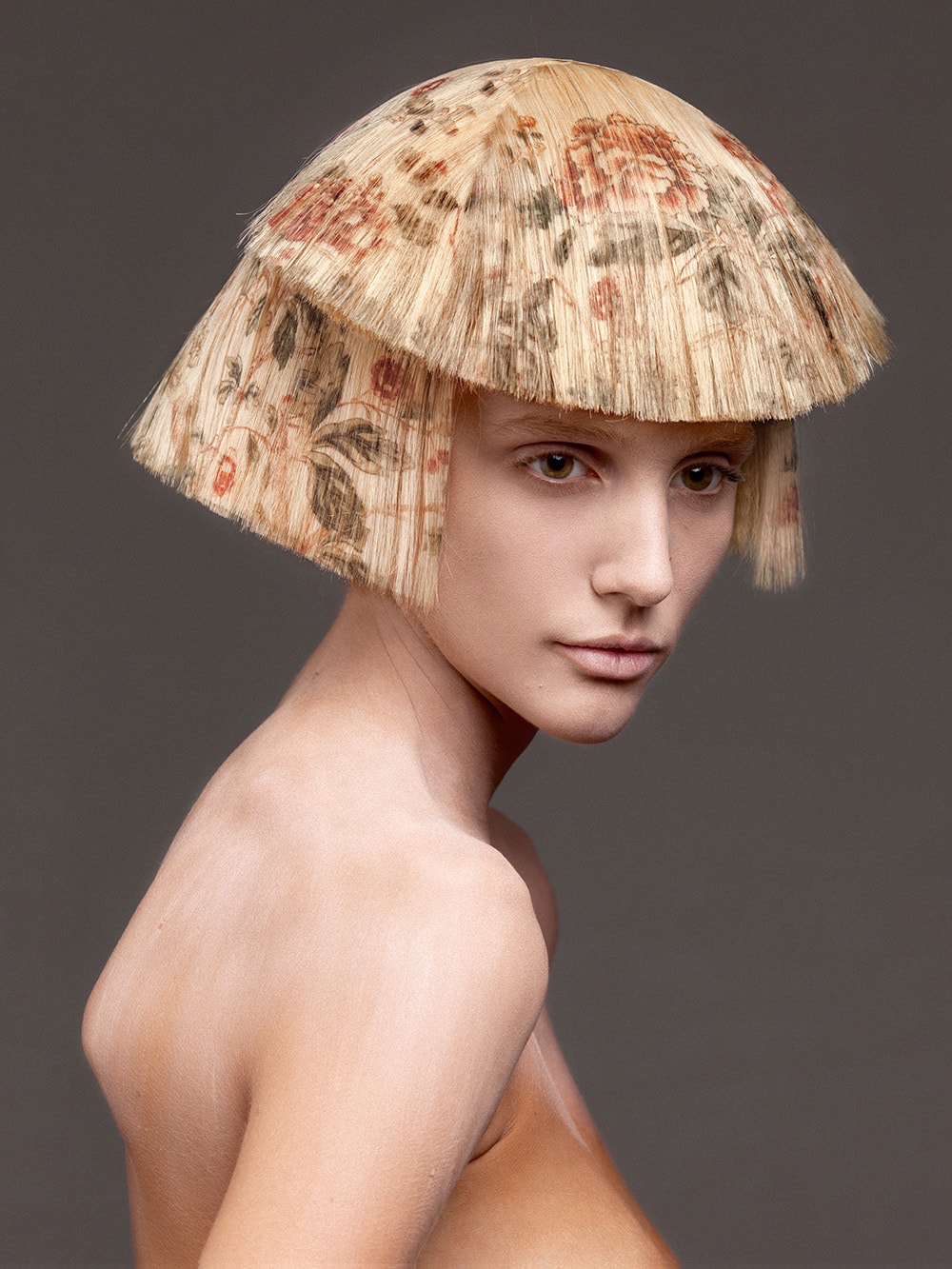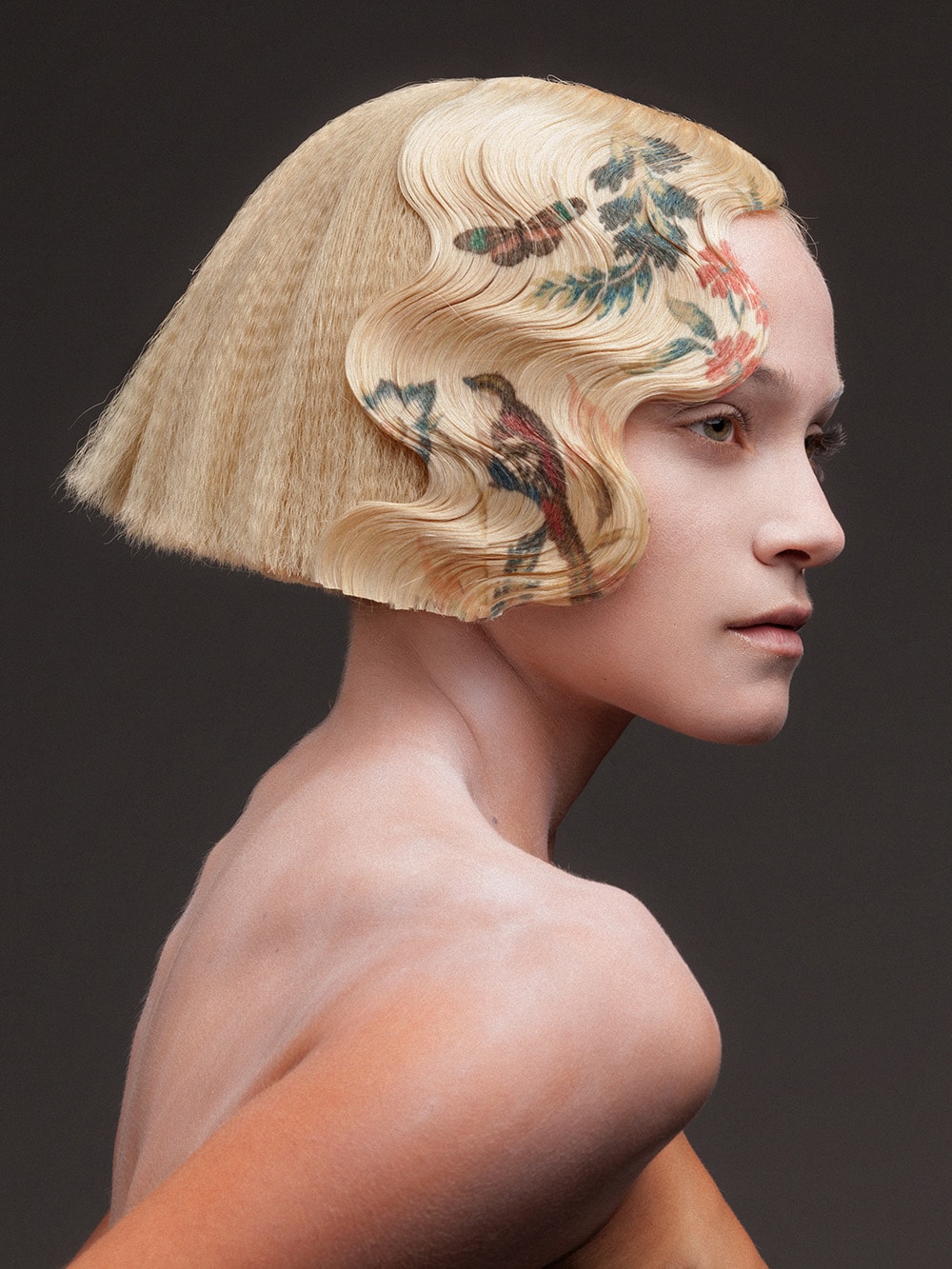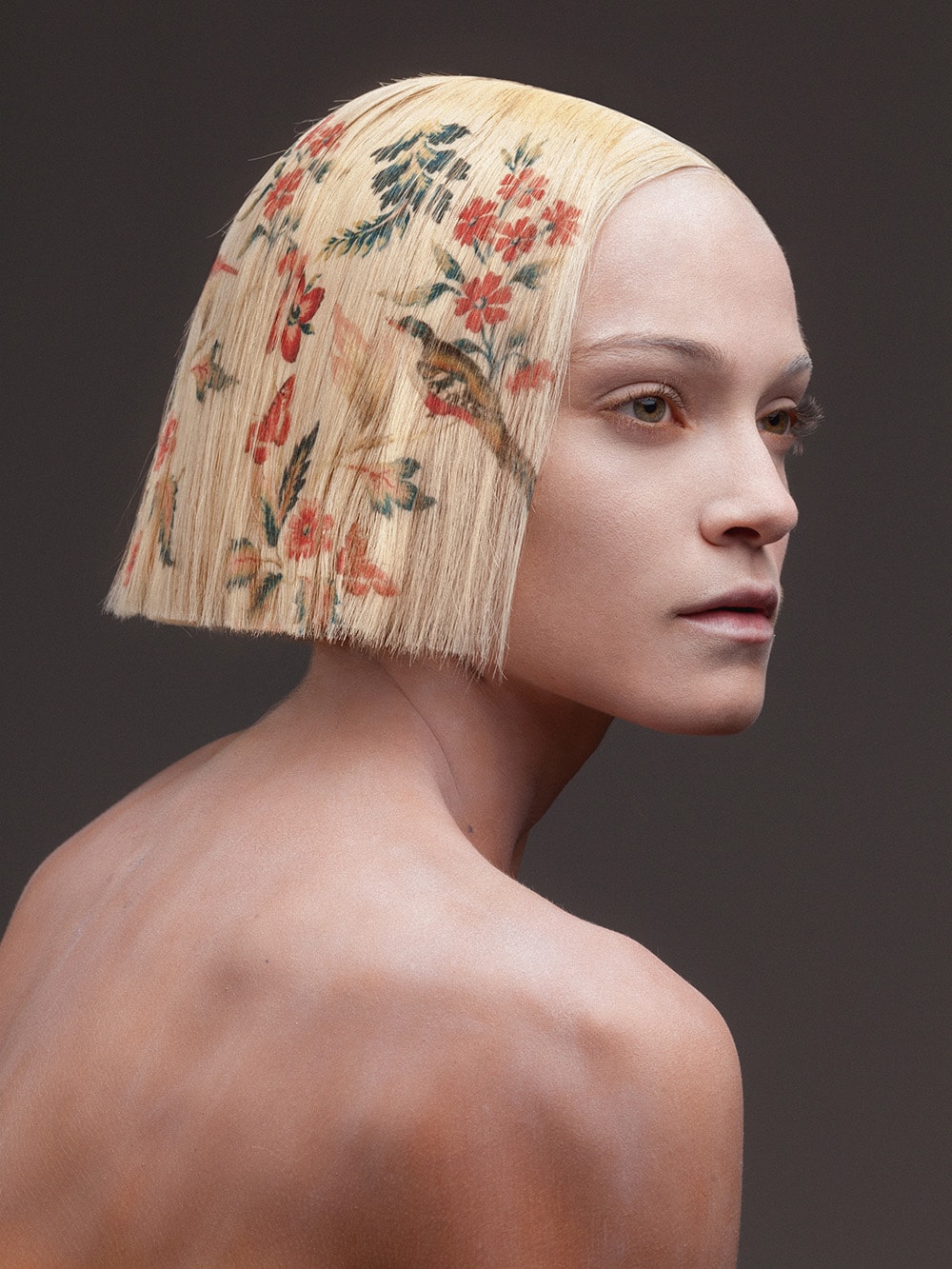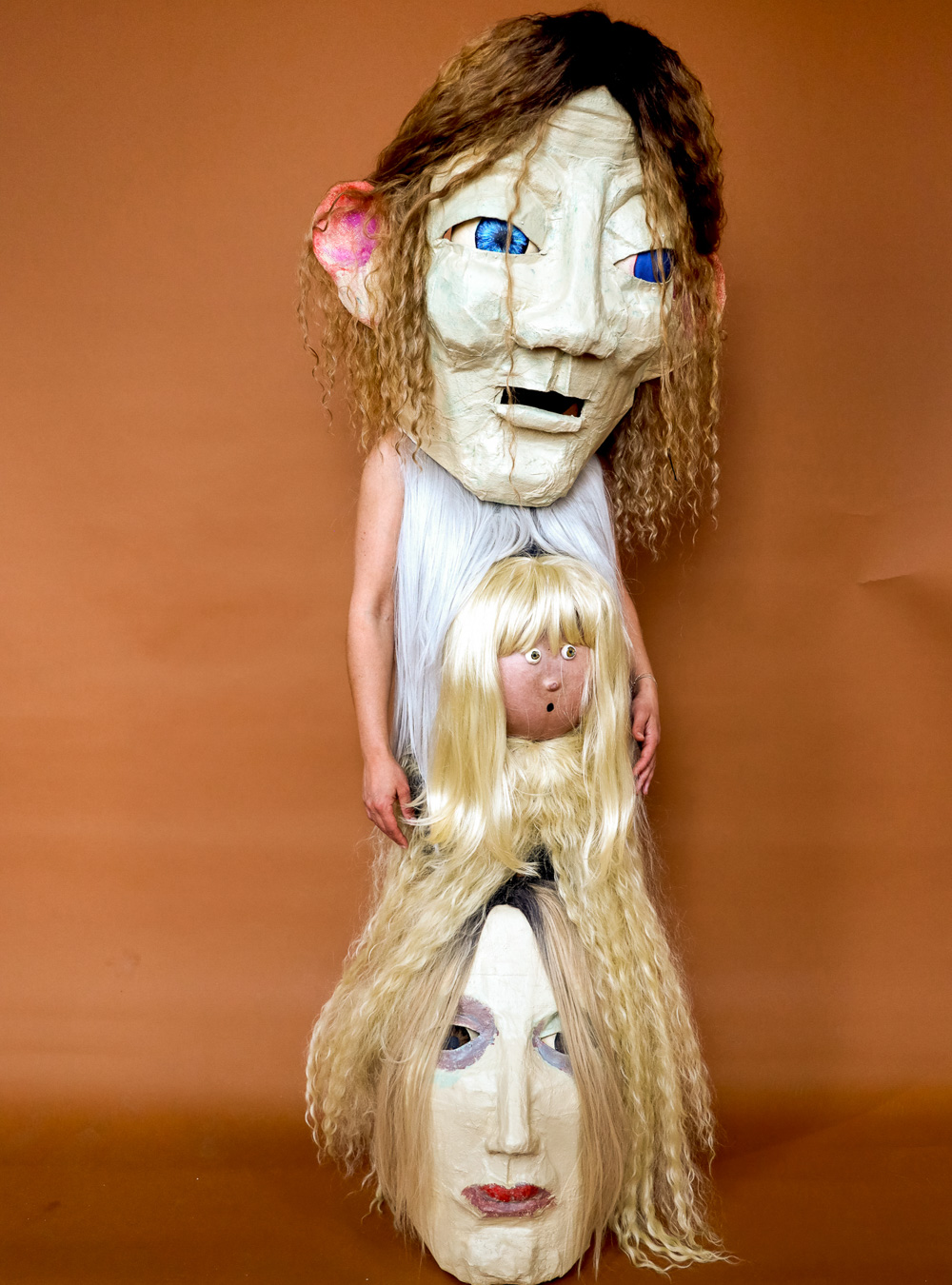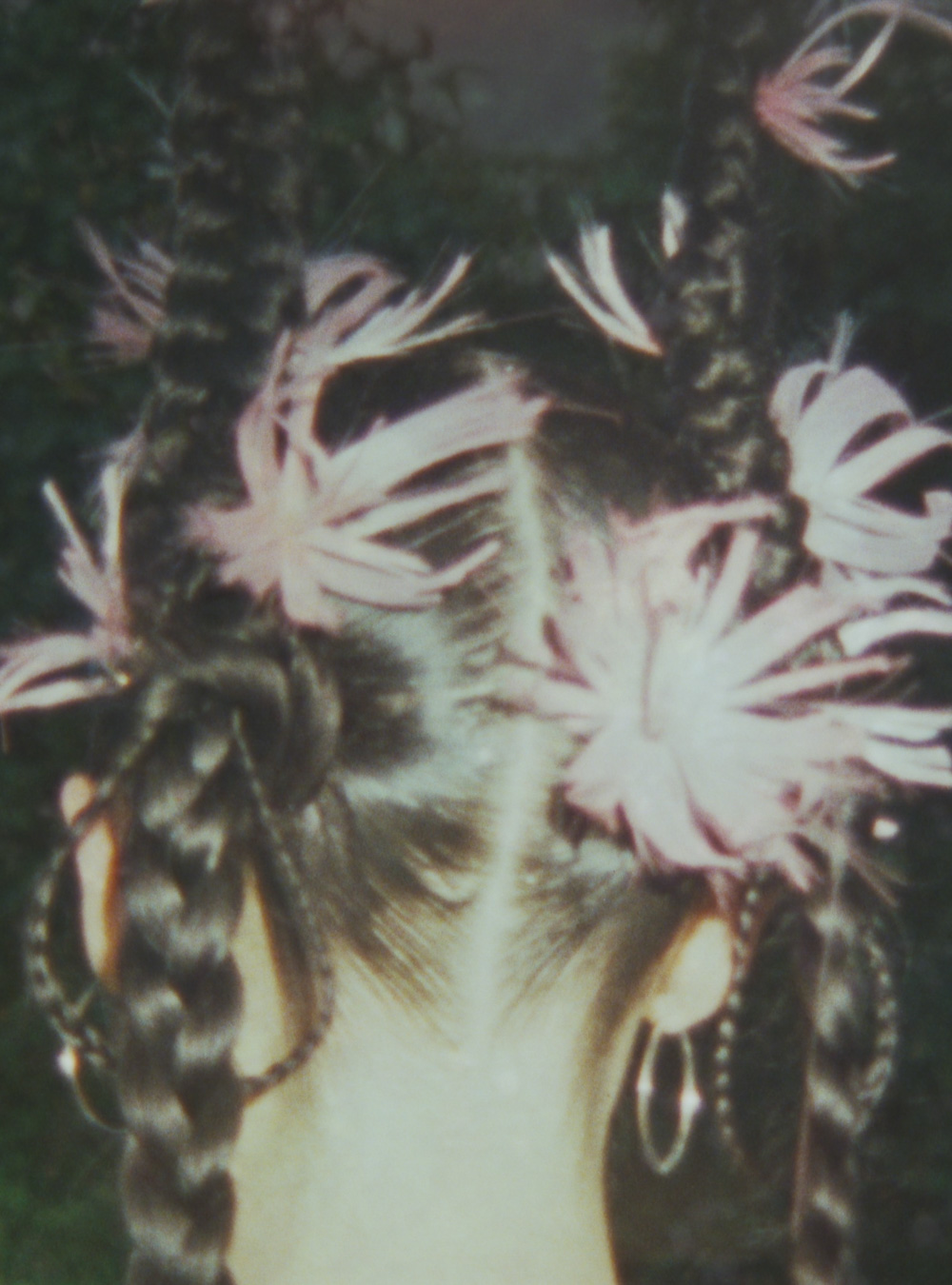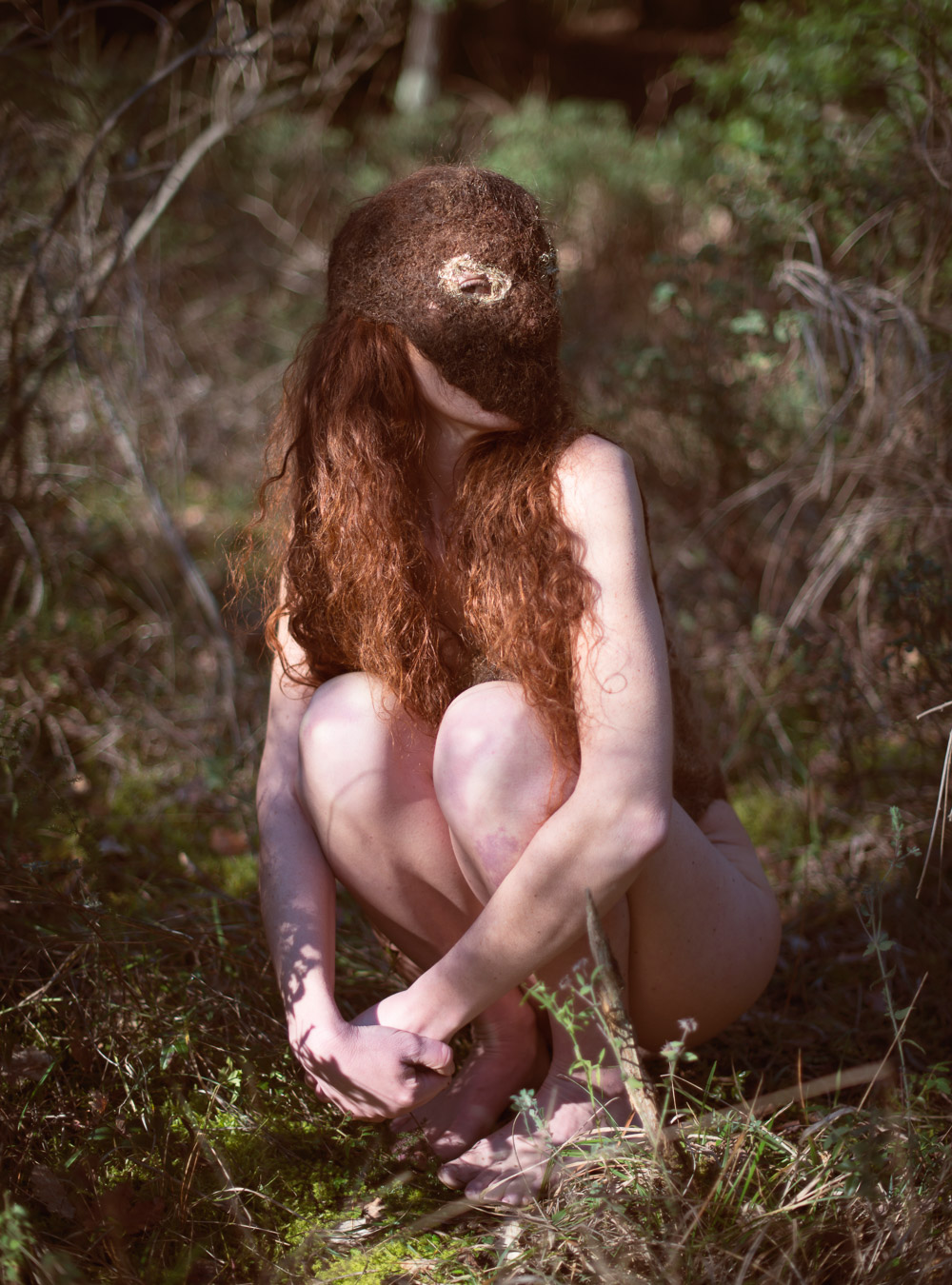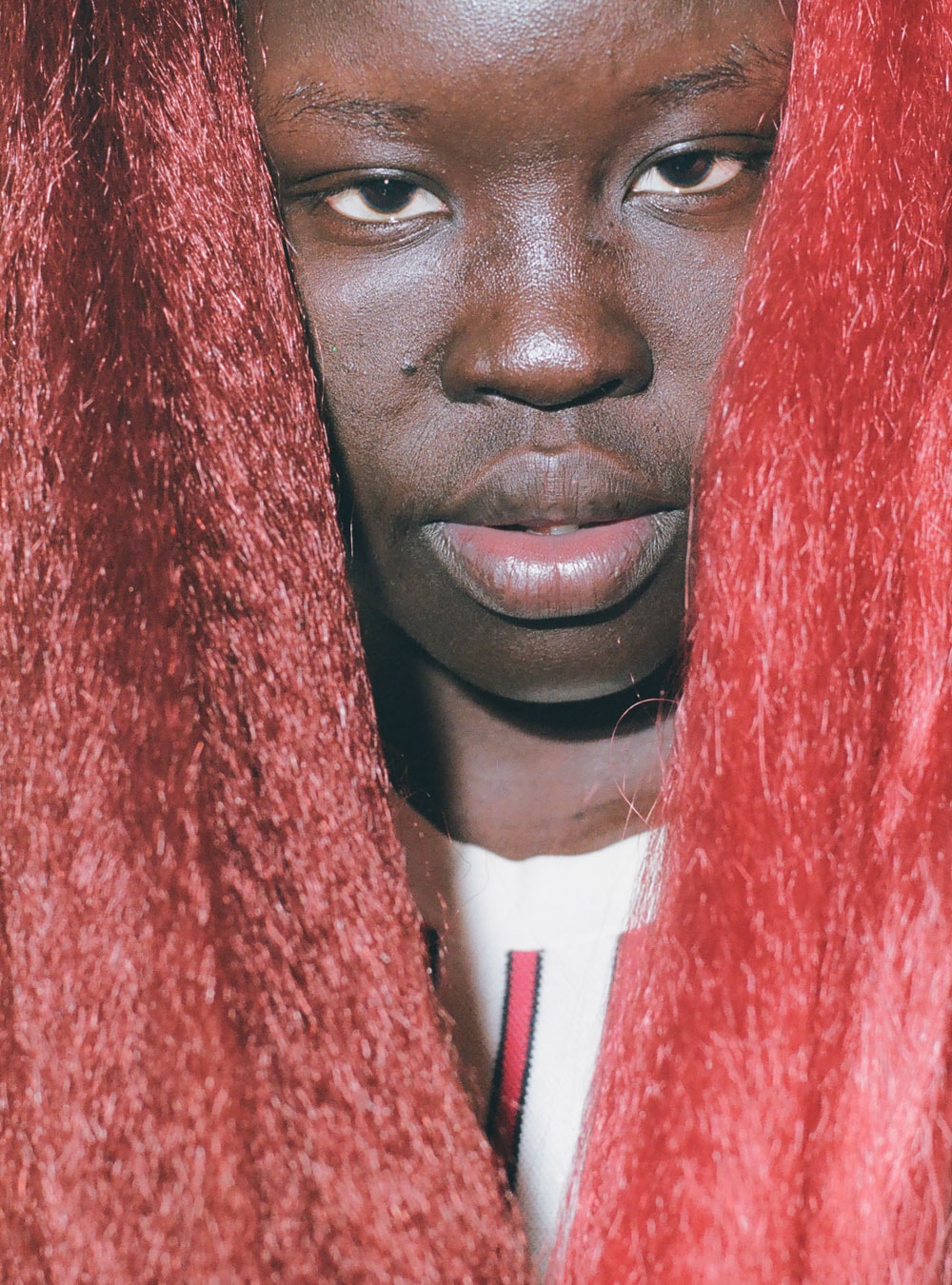- Alexis Ferrer
- Alexis Ferrer
- Alexis Ferrer
PEOPLE: Spanish Hairdresser of the Year Alexis Ferrer describes developing the hair printing technique behind his magnificent collection La Favorite
Photography: Rafael Andreu
Hair: Alexis Ferrer
Assistant: Andreu Gómez
Makeup: Mary Torres
Interview: Katharina Lina
For a moment in autumn 2020, the hair world seemed to stop in awe as reigning Spanish Hairdresser of The Year Alexis Ferrer’s collection La Favorite went viral gaining him international recognition. Peonies, butterflies, and hummingbirds resting on blossoming twigs decorated the blonde bobs with such meticulous detail and razor-sharp precision, it was evident that these motifs had not been hand-dyed or stencilled on.
In 2012, Ferrer was asked to interpret a collection for the Wella Trend Vision Awards, for which he first started exploring hair as a canvas for printing. “The aim of the show was to innovate with a technique not usually used in hairdressing, and photographic printing on hair seemed the ideal way to represent a story in a graphic and impressive way.” For the 080 Barcelona Fashion Week 2017, Ferrer collaborated with designer Txell Miras whose collection was inspired by shipping containers and fishermen. Models were sent down the catwalk with disguised faces and fishermen’s portraits printed onto their hair extensions.
Three years later, after revisiting and perfecting the techniques, working on colour intensity and improving definition, Ferrer updated his process from using photographic inks to digitally-generated ones, allowing him to use colour and design on a new scale; a method that had been pioneered by the Spanish ‘head hacker’ group X-Presion in 2011, and won them an award at the Alternative Hair Show the following year. With this method the limited black and white shading of Ferrer’s previous prints was replaced by colour gradients and intricate motifs. “We took inspiration from the palace gardens in 18th century France” Ferrer explains, “At that time flowers and animals inspired couturiers to create the best fabrics for the French bourgeoisie.”
In late December 2020, one of Hollywood’s top celebrity hairstylists posted a photo of Jennifer Lopez in a blonde bob sporting a floral branch design, stirring necessary conversations regarding influence and originality.
“We took inspiration from the palace gardens in 18th century France. At that time flowers and animals inspired couturiers to create the best fabrics for the French bourgeoisie”
Tell us a bit about your career journey so far. As a child, I spent most of my time in my mother’s salon growing up between hairdressers. I was born in Barcelona, one of the most avant-garde fashion scenes, which inspired me to push the limits of design in my imagination. Growing up in the middle of different artistic disciplines such as the surrealism of Dalí, the modernism of Gaudi or the molecular gastronomy of Ferran Adrià, influenced me a lot, and all my work is always linked to nature.
For the last 20 years I’ve worked on over 1,200 catwalks across the globe in Barcelona, Paris, Milan and London. I have also collaborated with several fashion events for Wella, haute-couture in Paris, films and theatre. I studied with Vidal Sassoon in London and Los Angeles, and since 2012 I’m part of the Wella Global Creative Team which is led by Eugene Souleiman. I also have my own business, running four salons and managing a team of 54 employees.
What inspired you to print on top of hair? How did you first get this idea? In 2012 I had the honour to represent the Echo collection during the Wella International TrendVision Award. The collection was based on the dark beauty within ourselves, a journey to the inner part of yourself where the most protected feelings are, like anguish, fear and loneliness. We were interested in using hair as the channel to express those inner feelings, and by printing pictures onto the hair, we created the impact we were looking for. I liked the idea of the hair being an extension of the clothes pattern, like the French fabrics that inspired this. Or just feeling connected with nature and the environment.
"I think that we all take inspiration from everyone and everywhere... But if you just copy it, you need to recognise where it comes from"
How did you develop and change this printing technique over the years? From the moment we started printing photography on hair in 2012, we have been improving the technique, achieving more definition and using a wider range of colour. I must admit that the first impressions on the hair were a challenge. It took two months to get good results with high definition. The images we used for the Echo collection were taken from the movies The Shining and Psycho, both in black and white. After the show for ITVA, we collaborated with fashion designer Txell Miras for whom we made extensions with fisherman’s faces, also in black and white. In 2020 we launched La Favorite collection. At this point we developed the process and used a digital printer achieving better quality. Mixing technology with our knowledge of crafts has allowed us to recreate those wonderful patterns on the hair; it has opened a world of infinite possibilities for the future.
How did you feel when everyone was talking about your collection? I felt really happy that La Favorite had an impact on the hair industry. The collection was created through a combination of artisanal styles mixed with technology. A perfect blend for the new generation who are looking for new boundaries of fashion. Once again it shows that everything in fashion remains to be invented and to be innovated.
Being inspired and influenced is inevitable across creative disciplines, but there is a line distinguishing inspiration from plagiarism. How can we credit and establish creative ownership more effectively? I think that we all take inspiration from everyone and everywhere. One of the most exciting elements when you create a collection is to create a new technique and to share it. My main goal of working on the experimental side of fashion is to bring new ideas to the hair industry. Most of the time my sketchbook starts with a white paper and I start looking for inspiration across different artistic fields. But sometimes I simply love a hair collection and that can be also a good start for developing an idea. But if you just copy it, you need to recognise where it comes from. Behind each collection there is a story, a concept and techniques that have been created to inspire other hairdressers and creatives. If you take the whole thing as your own creation, that is simply not fair.
- ANTHROPOLOGY OF HAIR
- ANTHROPOLOGY OF HAIR
- ANTHROPOLOGY OF HAIR
- ANTHROPOLOGY OF HAIR
- ANTHROPOLOGY OF HAIR
